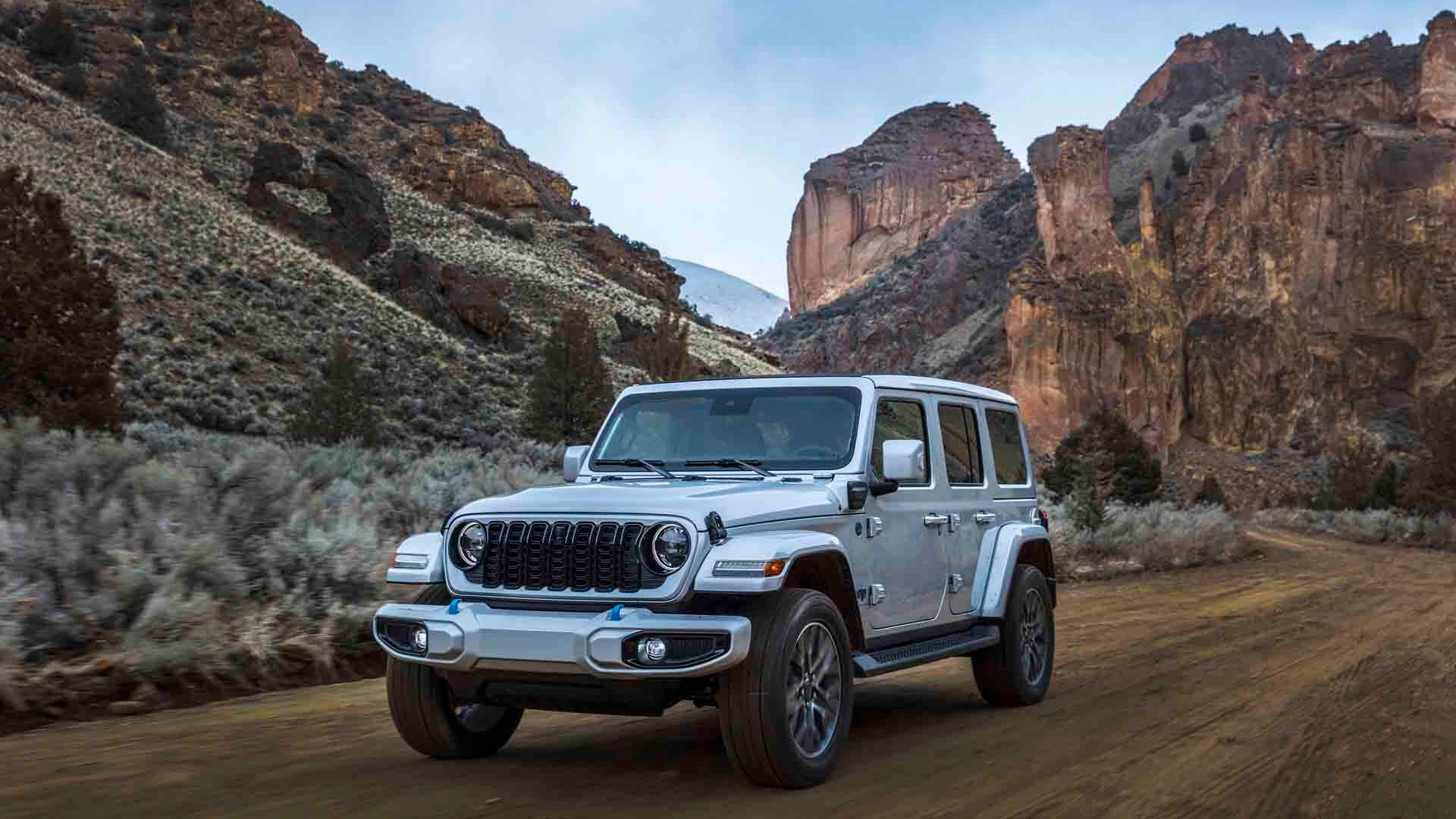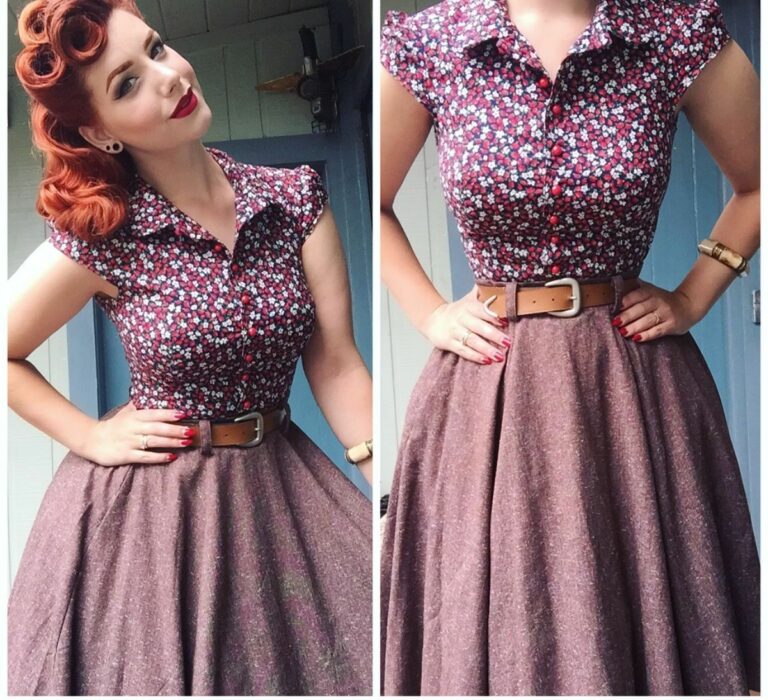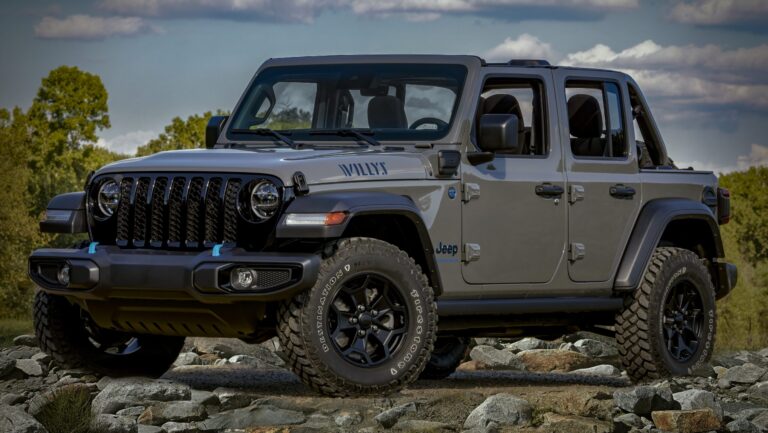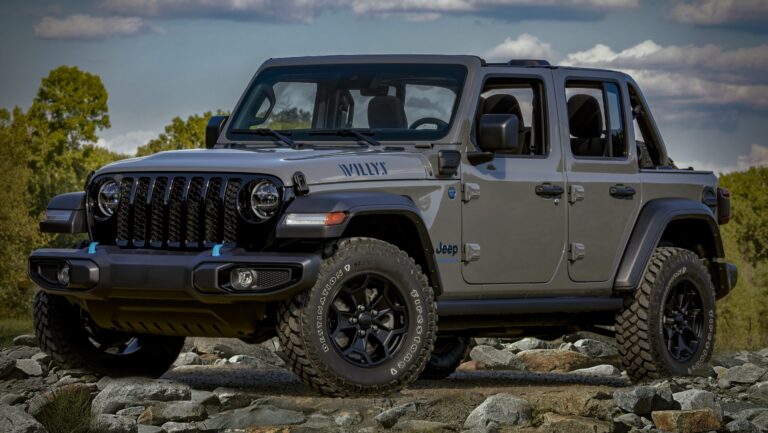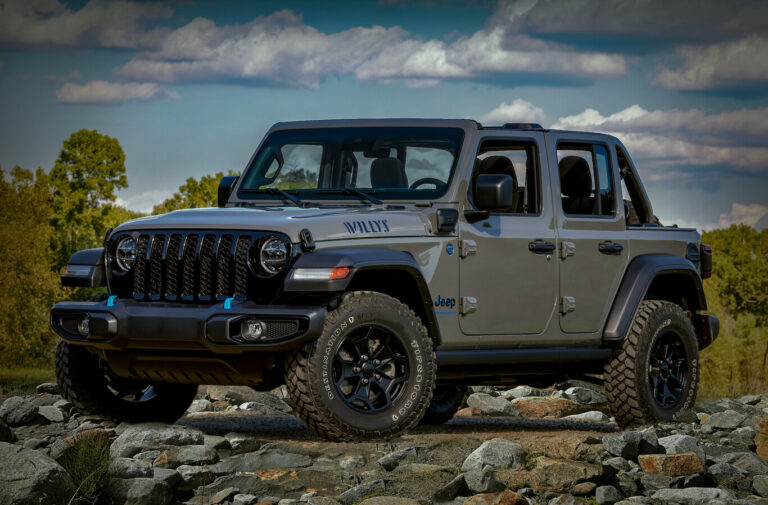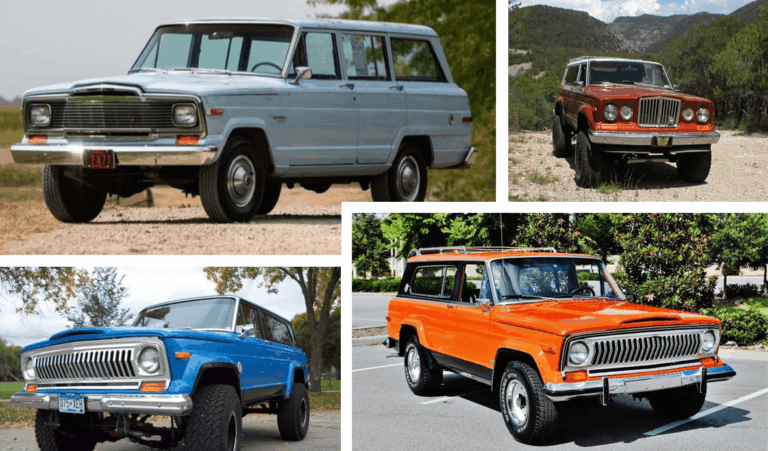Jeep Wrangler X Vs Sport: Unraveling the Iconic Duo
Jeep Wrangler X Vs Sport: Unraveling the Iconic Duo jeeps.truckstrend.com
The Jeep Wrangler stands as an enduring symbol of adventure, freedom, and unparalleled off-road capability. For decades, it has captured the hearts of enthusiasts and casual drivers alike, offering a unique blend of rugged utility and customizable charm. When embarking on the journey to own a Wrangler, one of the first decisions potential buyers often face is selecting the right trim level. Among the numerous options, the "Sport" trim holds a foundational place as the entry point, while the "Wrangler X" represents a historically significant, slightly more equipped variant.
This article delves into a comprehensive comparison of the Jeep Wrangler Sport and the Jeep Wrangler X, exploring their characteristics, key differences, and what each offers to prospective owners. Understanding the nuances between these two models – particularly given the Wrangler X’s historical context – is crucial for making an informed decision, whether you’re seeking a blank canvas for extreme modifications or a well-rounded daily driver with a touch more flair.
Jeep Wrangler X Vs Sport: Unraveling the Iconic Duo
The Enduring Foundation: Jeep Wrangler Sport
The Jeep Wrangler Sport is, and always has been, the quintessential entry point into the Wrangler family. It embodies the core philosophy of the vehicle: rugged simplicity, go-anywhere capability, and an open invitation for personalization. As the base model, it often comes with the most fundamental features, making it the most accessible in terms of price.
Key Characteristics of the Jeep Wrangler Sport:
- Affordability: The Sport trim consistently holds the lowest starting MSRP, making it an attractive option for budget-conscious buyers or those who plan extensive aftermarket modifications.
- Classic Aesthetics: It typically features the classic Jeep look with standard black fender flares, basic wheels, and a soft top (though hardtop options are available). This unadorned appearance often appeals to purists.
- Robust Powertrain: Modern Sport models (JL generation, 2018-present) typically come standard with the reliable 3.6L Pentastar V6 engine, offering ample power for both highway cruising and off-road excursions. Earlier JK generation (2007-2017) Sports also featured capable V6 engines.
- Exceptional Capability: Despite being the base model, the Sport sacrifices none of the Wrangler’s legendary 4×4 capability. It comes standard with a Command-Trac part-time 4WD system, solid axles, and a transfer case that allows for low-range gearing, making it highly competent on trails right off the lot.
- "Blank Canvas" Potential: Its minimalist nature makes the Sport an ideal platform for customization. Owners often choose the Sport to save money on factory options, instead investing in aftermarket lift kits, larger tires, bumpers, winches, and more specialized off-road equipment tailored to their specific needs.
![]()
Benefits of Choosing a Sport:
- Lowest upfront cost.
- Maximum flexibility for aftermarket modifications.
- Pure, unadulterated Wrangler experience.
- Excellent resale value.

Considerations:
- Fewer standard comfort and convenience features (e.g., manual windows, basic infotainment).
- Less refined interior compared to higher trims.
The Elevated Sport: Decoding the Jeep Wrangler X (Historical Perspective)
The "Jeep Wrangler X" trim level is not a current, standalone offering in the modern JL generation (2018-present) of Wranglers. Instead, the Wrangler X was a specific trim that existed primarily during the JK generation (2007-2010, and sometimes as special editions thereafter). It was designed to bridge the gap between the bare-bones Sport and the more feature-rich Sahara trim, offering a step up in aesthetics and convenience without the full premium price tag.
Key Characteristics of the Jeep Wrangler X (JK Era):
- Enhanced Aesthetics: The "X" typically included upgrades like 17-inch steel or aluminum wheels (compared to the Sport’s standard 16-inch steel wheels), body-color fender flares, and sometimes fog lights as standard. These small touches gave it a more finished look.
- Minor Interior Upgrades: Often, the Wrangler X came standard with features that were optional on the base Sport, such as air conditioning (AC), upgraded cloth seating materials, and perhaps a slightly better sound system.
- Value-Added Package: Essentially, the "X" package aimed to provide popular Sport options as standard, offering more bang for the buck for buyers who wanted a bit more comfort and style without jumping to the Sahara or Rubicon.
- Same Core Capability: Mechanically, the Wrangler X shared the same powertrain and Command-Trac 4WD system as the Sport of its era, meaning its off-road prowess was fundamentally identical.
Benefits of Choosing a Wrangler X (Used Market):
- More standard features than a base Sport from the same era.
- Improved aesthetics with factory upgrades.
- Often a good value in the used market for those seeking a slightly more equipped JK.
Considerations:
- Not a Current Model: The primary challenge is that you can only find a Wrangler X in the used market, typically from the 2007-2010 model years (or very specific special editions that might carry an "X" designation). This means factoring in vehicle age, mileage, and maintenance history.
- Modern Sport models with optional packages can easily surpass the features offered by the historical "X" trim.
Feature-by-Feature: A Direct Comparison
To provide a clearer picture, let’s compare the typical features of a JK-era Wrangler X against a base JK-era Sport, and then discuss how a modern JL Sport (with options) fits into the picture.
| Feature Category | Jeep Wrangler Sport (Typical JK Era) | Jeep Wrangler X (Typical JK Era) | Modern Jeep Wrangler Sport (JL w/ Options) |
|---|---|---|---|
| Exterior | 16-inch steel wheels, black flares, standard soft top | 17-inch steel/aluminum wheels, body-color flares, fog lights (often standard), sometimes hardtop option | 17-inch/18-inch alloy wheels, body-color flares (optional), LED lighting (optional), premium soft/hard tops |
| Interior | Manual windows, basic cloth seats, no standard AC (optional), basic radio | Power windows (often standard), upgraded cloth seats, standard AC, slightly better radio | Power windows/locks, upgraded cloth/leather seats (optional), standard AC, Uconnect infotainment (5-inch to 8.4-inch w/ navigation) |
| Powertrain | 3.8L V6 (early JK), 3.6L V6 (late JK); 6-speed manual/4-speed auto | Same as Sport for its respective era | 3.6L V6, 2.0L Turbo, 3.0L EcoDiesel, 6-speed manual/8-speed auto; eTorque options |
| Drivetrain | Command-Trac 4×4 (part-time), open differentials | Same as Sport for its respective era | Command-Trac 4×4 (part-time), optional Selec-Trac (full-time), optional Tru-Lok diffs (Rubicon, but Sport can be upgraded) |
| Off-Road Tech | Basic traction control, hill start assist | Same as Sport for its respective era | Advanced traction control, hill descent control, Selec-Speed Control (optional), various off-road pages on infotainment |
| Convenience | Basic instrumentation, no cruise control (optional) | Cruise control (often standard), more comprehensive gauge cluster | Push-button start, remote keyless entry, heated seats/steering wheel (optional), advanced safety features (optional) |
Key Takeaways from the Comparison:
- Historical "X" vs. Sport: The JK-era Wrangler X truly was a "Sport Plus." It offered a more polished look and common convenience features that were often optional on the base Sport, providing a more comfortable daily driving experience out of the box.
- Modern Sport’s Evolution: Today’s JL Wrangler Sport, even in its base form, is significantly more refined and technologically advanced than its JK predecessors. Furthermore, with various optional packages (e.g., Technology Group, Cold Weather Group, Safety Group, Xtreme Recon Package), a modern Sport can be configured to far exceed the features and capabilities of the historical "Wrangler X," often approaching or even surpassing what was once offered in higher trims like the Sahara.
Choosing Your Wrangler: Practical Advice for Your Adventure
Deciding between a Jeep Wrangler Sport and considering a "Wrangler X" (either a used JK or a modern Sport optioned up to be an "X-equivalent") boils down to several practical considerations:
- Budget: The Sport remains the most affordable new Wrangler. If you’re looking at a used "Wrangler X," remember its age will impact its price significantly. Factor in potential maintenance for older vehicles.
- Purpose and Customization Plans:
- Pure Off-Road Build: If your goal is to immediately strip out factory components and install heavy-duty aftermarket parts (lift kits, axles, winches, etc.), the base Sport is your ideal choice. You save money by not paying for factory features you’ll replace anyway.
- Daily Driver with Capability: If you want a comfortable daily driver that can also hit the trails on weekends, a modern JL Sport with convenience packages (like the ones offering power windows, AC, and better infotainment) will likely be a better fit than an older, more basic "X."
- New vs. Used:
- New Sport: Offers the latest technology, warranty, and modern creature comforts. You can precisely spec it with the options you want.
- Used Wrangler X (JK): Can be a great value for those who appreciate the JK generation’s styling and don’t need the latest tech. However, carefully inspect its condition, mileage, and maintenance history.
- Technology Needs: Modern JL Sport models offer significantly more advanced infotainment, safety features, and driver-assist technologies than any JK-era Wrangler X. If cutting-edge tech is important, a new Sport is the clear winner.
- Aesthetics: If you prefer the look of body-color fender flares and nicer factory wheels without going full Sahara, a modern Sport can be optioned accordingly. The old "X" offered this out of the box for its time.
Actionable Insight: Test drive both a new Sport (ideally with some popular packages) and, if possible, a used JK-era Wrangler X. Pay attention to the ride quality, interior comfort, and available features. List your absolute must-haves versus nice-to-haves. This hands-on experience will clarify which model truly aligns with your expectations and lifestyle.
Price Comparison Table: Jeep Wrangler Sport vs. X (Illustrative)
Given that the "Wrangler X" is not a current standalone trim, this table provides an illustrative comparison, focusing on a new JL Sport and estimated used prices for JK-era Sport and X models. Prices vary widely based on condition, mileage, location, and specific options.
| Model / Generation | Approximate Starting MSRP (New) / Estimated Used Price Range (Used) | Key Standard Features (Illustrative) | Common Upgrades / Differences |
|---|---|---|---|
| Jeep Wrangler Sport (JL) | New: ~$32,000 – $38,000+ | 3.6L V6, Command-Trac 4×4, 17-inch steel wheels, 5-inch Uconnect, manual soft top, removable doors/top | Power windows/locks, AC, hardtop, larger infotainment (7-inch/8.4-inch), LED lighting, heated seats, advanced safety tech |
| Jeep Wrangler X (JK) | Used: ~$10,000 – $20,000+ (Varies greatly by year/condition) | 3.8L/3.6L V6, Command-Trac 4×4, 17-inch wheels (steel/alloy), body-color flares, AC (often standard) | Power windows, better sound system, hardtop, minor interior refinements over base Sport. Not as advanced as modern JL options. |
| Jeep Wrangler Sport (JK) | Used: ~$8,000 – $18,000+ (Varies greatly by year/condition) | 3.8L/3.6L V6, Command-Trac 4×4, 16-inch steel wheels, black flares, basic radio | AC (often optional), power windows, hardtop. More basic than the "X" of the same era. |
Note: The "Used" price ranges are highly generalized and depend on many factors including model year, mileage, condition, modifications, region, and market demand. Always conduct thorough research and vehicle inspections for used purchases.
Conclusion: The Spirit of Choice
In the timeless debate of Jeep Wrangler X vs. Sport, the answer isn’t about one being inherently "better" than the other, but rather which best aligns with your priorities. The Jeep Wrangler Sport, in both its historical and current iterations, serves as the accessible, robust, and highly customizable foundation of the Wrangler lineage. It’s the ideal choice for purists, budget-conscious buyers, and those who envision a highly personalized off-road machine.
The "Wrangler X," while no longer a standalone trim, holds a significant place in Jeep’s history as an "enhanced Sport." It offered a convenient bundle of popular features that elevated the Sport’s comfort and aesthetics during its time. For those exploring the used market, a well-maintained JK-era Wrangler X can still represent excellent value. However, a modern JL Sport, especially when optioned with various packages, can now easily replicate and surpass the features once found in the "X," while benefiting from contemporary technology and refinements.
Ultimately, whether you choose the fundamental Sport or seek out the historically equipped "X" (or build your own "X-equivalent" with a new Sport), you’re investing in a vehicle renowned for its spirit of adventure and unparalleled connection to the open road and rugged trail. The best Wrangler is always the one that perfectly fits your journey.
Frequently Asked Questions (FAQ)
Q1: Is the Jeep Wrangler X still manufactured as a current trim level?
A1: No, the "Wrangler X" is not a standalone trim level in the current JL generation (2018-present) of Jeep Wranglers. It was primarily a specific trim during the JK generation (2007-2010) and sometimes appeared in special editions.
Q2: What was the main difference between a JK-era Wrangler Sport and a Wrangler X?
A2: The Wrangler X typically offered more standard features than the base Sport of its time, including 17-inch wheels (vs. 16-inch), body-color fender flares, standard air conditioning, and often power windows and an upgraded sound system. It was essentially a more equipped version of the Sport.
Q3: Can I make a modern Sport model comparable to or better than the old Wrangler X?
A3: Absolutely. Modern JL Wrangler Sport models can be outfitted with various optional packages (e.g., Technology Group, Cold Weather Group, Convenience Group) that include features like power windows, advanced infotainment, LED lighting, heated seats, and more, easily surpassing the feature set of the historical Wrangler X.
Q4: Which Wrangler (Sport or X) is better for serious off-roading?
A4: Both the Sport and the historical X share the same fundamental 4×4 system (Command-Trac) and solid axles, making them highly capable off-roaders. For serious modifications, the Sport is often preferred as a "blank canvas," allowing owners to invest savings into aftermarket upgrades like lift kits, larger tires, and lockers, which will ultimately dictate extreme off-road performance more than factory trim differences.
Q5: Is the Jeep Wrangler Sport suitable for daily driving?
A5: Yes, the modern JL Wrangler Sport is much more refined and comfortable for daily driving than older generations. While still rugged, it offers improved ride quality, quieter interiors, and available convenience features. The historical "Wrangler X" also offered minor comfort upgrades over the base Sport of its era, making it a slightly better daily driver for its time.
